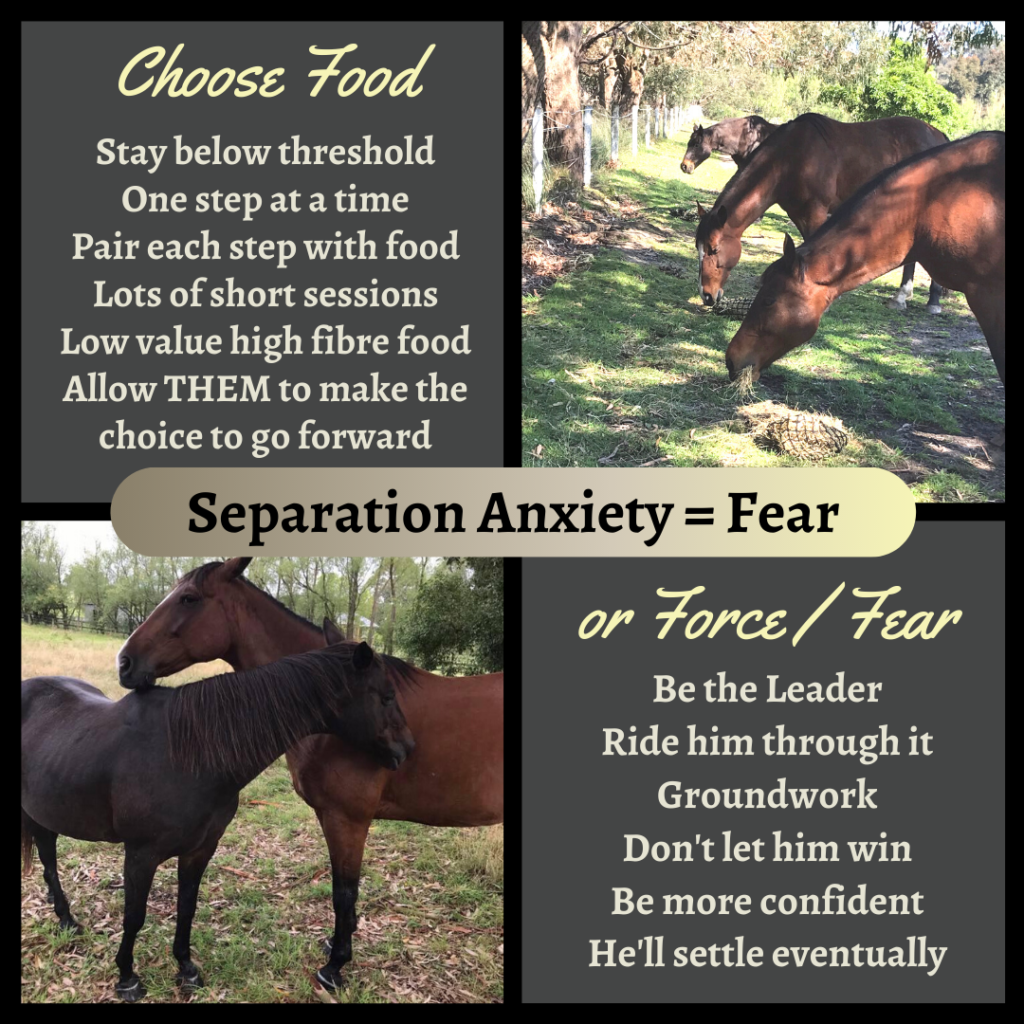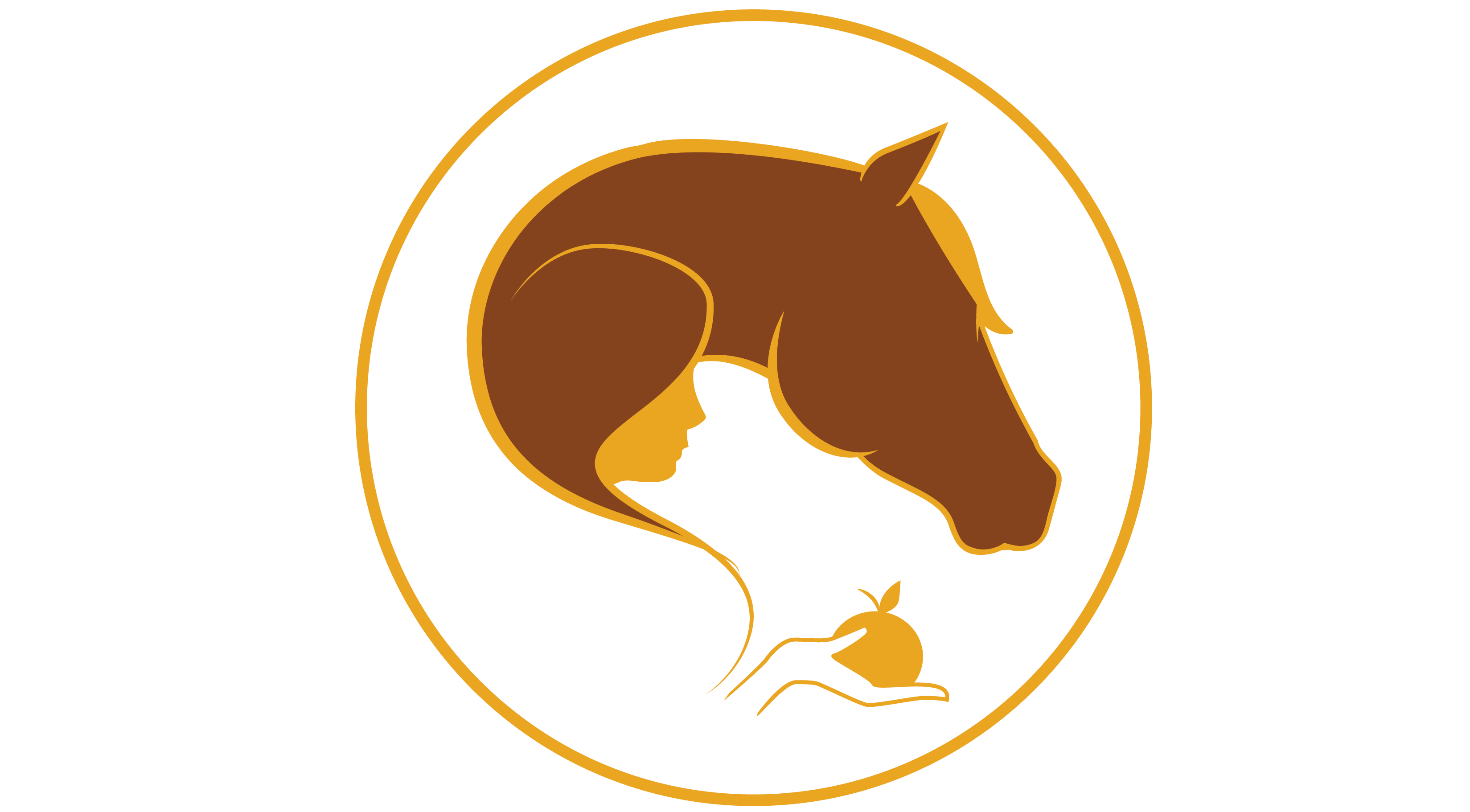Separation Anxiety?

Buddy Sour
Herd Bound
Destination Addiction
What do all these terms mean?
Separation Anxiety is one of the most common problems that horse owners face. It is a natural behaviour for horses – millions of years of evolution have taught them to be very scared if they find themselves alone and to rectify it immediately. Being alone is how an animal gets attacked easily by a predator and being alone means you are in danger and vulnerable to attack because you don’t have the safety of numbers to protect you. A horse cannot rest or sleep or eat properly alone and their goal will always be to re-join their herd as soon as possible. When you observe a horse experiencing separation anxiety, there is usually lots of running, pacing and weaving as they work hard to return to the safety of the herd.
The first experience of separation anxiety for domestic horses is usually at weaning. Many abrupt and sudden weaning practices cause mare and foal much distress and fear. Experiencing this kind of fear and trauma in their formative years, can affect a horse for the rest of their life and make them more susceptible to severe separation anxiety later in life.
Many training approaches that deal with the behaviours associated with separation anxiety focus on Punishment. Popular approaches are ‘making the wrong thing hard and the right thing easy’, ‘working’ the horse near other horses, circling and causing discomfort, fear and pain when the horse gravitates towards other horses. Keeping horses living in isolation to prevent them bonding or forming relationships with other equines is another popular approach.
The problem with these approaches is that they are working against the nature of the horse – against their basic instincts and biology that have been developed and successful for the horse, over millions of years.
Instead, we can work with the horse and teach them! Oftentimes we have to undo a lot of fear and trauma that they have already experienced, so we need to be patient to begin with. But as we help the horse to learn and never trigger their fear response, we will be rewarded with a horse who’s able to leave their friends or have their friends leave them without fear and stress.
Humane force free approaches to separation anxiety utilise Desensitisation and Counter Conditioning.
In order to do this, it’s important to note the point your horse starts to go over threshold ie shows subtle fear responses, or hypervigilance and hyperarousal and plan your training to start well before this point.
Training literally involves very small steps and we pair each step with food to create a good feeling/association with leaving the herd.
I found yet another fantastic blog from Eileen Anderson that discusses fear and how Desensitisation and Counter Conditioning can help you overcome it in yourself, your dog and this also applies to your horse. There’s some great examples of how small and detailed the exposures/steps need to be in a DS/CC program, to give you an idea.
You can find her blog here:-
Finally, if anyone gives you advice that seems to work against the horse or tries to change the horse’s feeling of wanting to be with other horses via some kind of discomfort, then smile and thank them and walk away.

